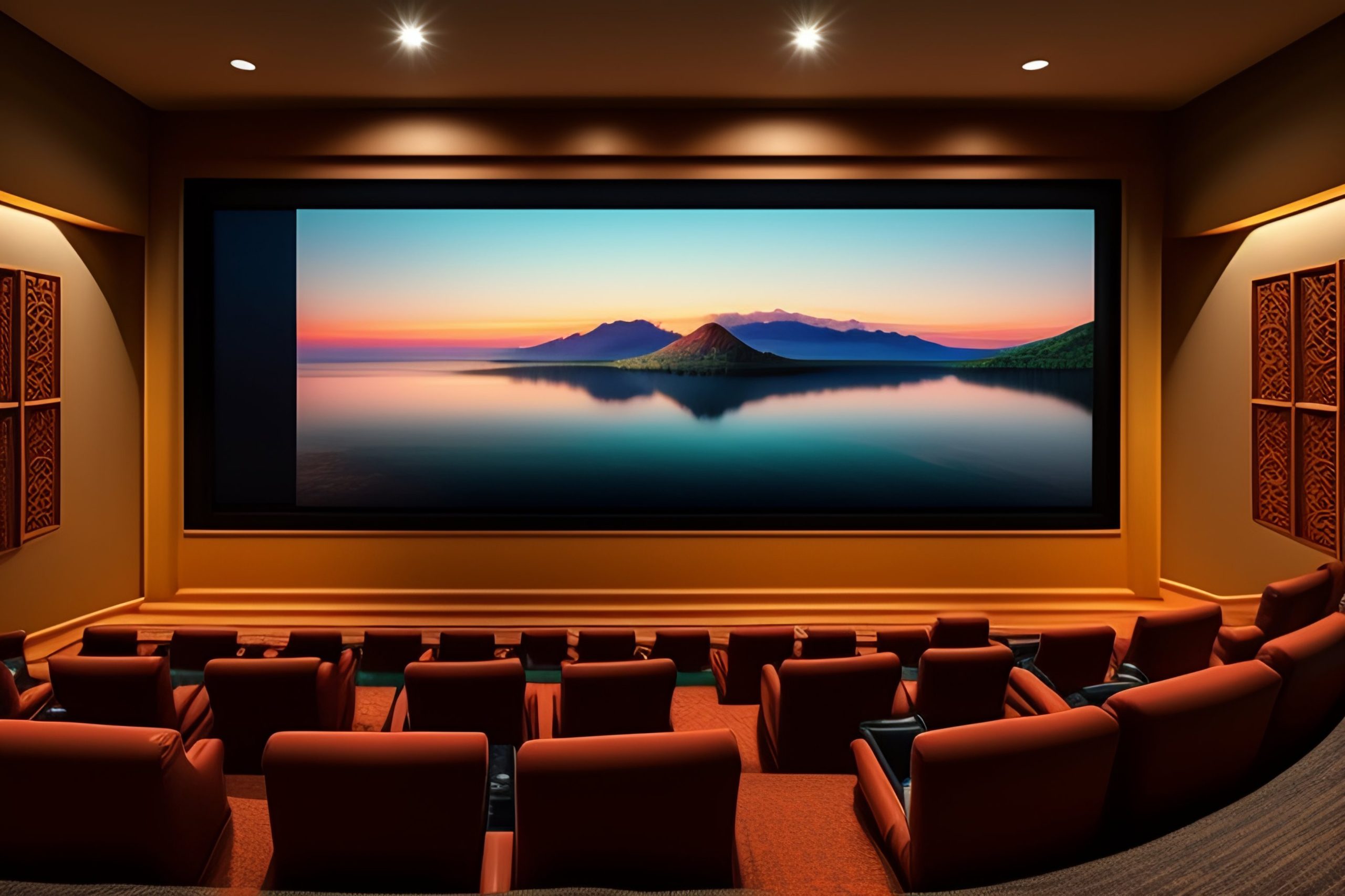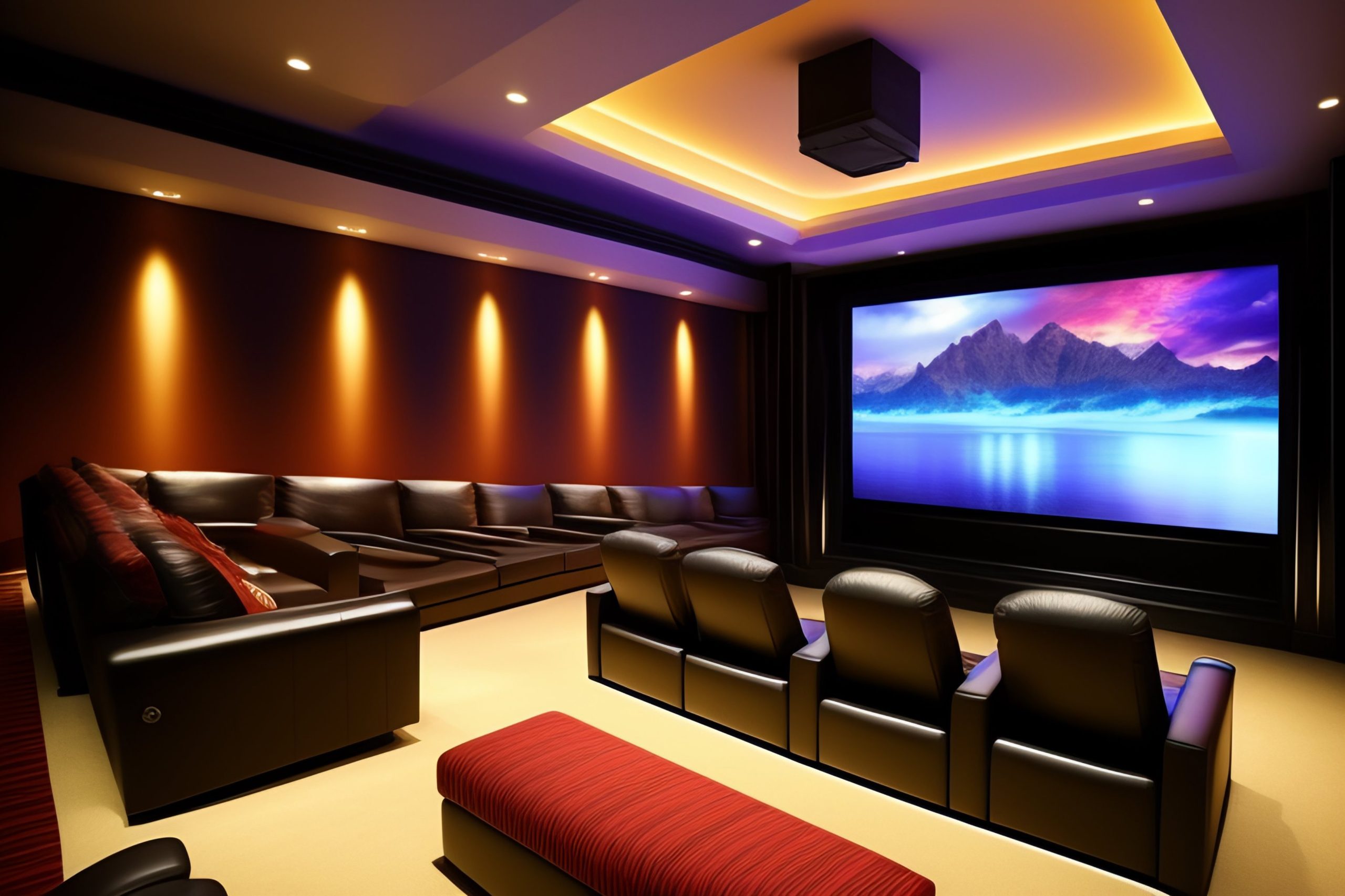
Introduction
This comprehensive guide, produced by the research and development unit of Lasting Oak, will walk you through the process of transforming your basement into a stunning home theater. With a focus on basement renovation, DIY home theater setups, and innovative basement design, we aim to help you create the perfect movie room right in the comfort of your home.

Essential Steps in a Basement Renovation for Creating a Home Theater
Transforming your basement into a home theater involves several crucial steps to ensure a functional and enjoyable space. Here’s a comprehensive guide to the essential steps in a basement renovation for creating a stunning home theater:
- Initial Assessment and Planning
- Evaluate the Space: Begin by thoroughly assessing your basement to determine its suitability for a home theater. Check for any structural issues, moisture problems, or electrical concerns that need to be addressed during the basement renovation.
- Set a Budget: Outline a budget that covers all aspects of the renovation, including materials, equipment, and professional services. A clear budget will help you prioritize expenses and avoid overspending.
- Basement Design and Layout
- Design the Layout: Plan the layout of your movie room, considering the placement of the screen, seating, and audio equipment. Ensure there is enough space for comfortable seating and optimal viewing angles.
- Soundproofing: Incorporate soundproofing measures into your basement design to prevent noise from disturbing the rest of the house. Use acoustic panels, heavy curtains, and carpets to enhance sound quality within the room.
- Electrical and Wiring Work
- Install Electrical Outlets and Lighting: Plan the placement of electrical outlets to accommodate your home theater equipment. Install dimmable lighting to create the perfect movie-watching ambiance.
- Wiring for Audio and Visual Equipment: Ensure that all wiring for your DIY home theater is properly installed and concealed to maintain a clean and organized look. This includes cables for speakers, projectors, and other audio-visual components.
- Flooring and Wall Treatments
- Choose Appropriate Flooring: Select flooring materials that enhance sound quality and comfort. Carpeting is a popular choice for home theaters due to its sound-absorbing properties.
- Wall Treatments: Use sound-absorbing materials on the walls to improve acoustics. Consider installing acoustic panels or soundproof drywall for better sound insulation.
- Seating and Furniture
- Select Comfortable Seating: Choose comfortable and ergonomic seating options for your movie room. Recliners, tiered seating, or theater-style chairs can provide an authentic cinematic experience.
- Arrange Seating for Optimal Viewing: Ensure that all seats have a clear view of the screen. Consider using risers for tiered seating to enhance visibility for all viewers.
- Audio and Visual Equipment Installation
- Select the Right Equipment: Invest in high-quality audio and visual equipment that fits your budget and space. This includes a projector or large-screen TV, surround sound system, and media players.
- Install and Calibrate Equipment: Properly install and calibrate your equipment to achieve the best possible sound and picture quality. Follow manufacturer guidelines or hire a professional for precise setup.
- Finishing Touches and Decor
- Add Personal Touches: Decorate your home theater to reflect your personal style and preferences. Use movie posters, themed decor, and comfortable furnishings to create an inviting atmosphere.
- Incorporate Storage Solutions: Include storage options for DVDs, gaming consoles, and other media. Built-in shelves and cabinets can help keep your movie room organized and clutter-free.
By following these essential steps in your basement renovation, you can successfully create a DIY home theater that provides a top-notch movie-watching experience. Whether you’re designing a cozy movie room for family nights or a state-of-the-art home theater for entertaining guests, careful planning and attention to detail will ensure a successful project. For more inspiration and expert advice, visit Lasting Oak, your go-to resource for home renovation and design.
What are the common challenges faced during basement renovations and how can they be overcome?
Basement renovations often come with a unique set of challenges. Here are some common issues and strategies to overcome them, particularly if you’re aiming to create a DIY home theater or a movie room as part of your basement design:
- Moisture and Water Damage:
- Challenge: Basements are prone to moisture, which can lead to mold and structural damage.
- Solution: Before starting your basement renovation, ensure proper waterproofing. Install a sump pump, use moisture-resistant materials, and consider a dehumidifier.
- Insufficient Lighting:
- Challenge: Basements typically have limited natural light, making the space feel dark and unwelcoming.
- Solution: Incorporate a mix of recessed lighting, wall sconces, and floor lamps to brighten up the area. For a DIY home theater, ambient lighting is essential for creating the right atmosphere without glare on the screen.
- Low Ceilings:
- Challenge: Many basements have low ceilings, which can make the space feel cramped.
- Solution: Opt for low-profile furniture and light fixtures. In your basement design, use light colors for walls and ceilings to create an illusion of height.
- Temperature Control:
- Challenge: Basements can be colder than the rest of the house.
- Solution: Insulate walls and floors to retain heat. Use area rugs for added warmth and consider installing a basement-specific HVAC system to regulate the temperature effectively.
- Limited Egress:
- Challenge: Basements often have limited exits, which can be a safety concern.
- Solution: Ensure your basement renovation includes an egress window or door to comply with building codes and enhance safety.
- Soundproofing:
- Challenge: Noise from the rest of the house or outside can disrupt your movie room experience.
- Solution: Use soundproofing materials such as acoustic panels, heavy curtains, and carpets. Soundproofing your walls and ceiling can help create an immersive environment for your DIY home theater.
- Space Planning:
- Challenge: Maximizing the use of space in a typically smaller and oddly shaped area.
- Solution: Careful basement design is crucial. Consider multi-functional furniture and built-in storage solutions. Plan your layout to accommodate your home theater equipment while leaving room for other activities.
By addressing these challenges with thoughtful planning and the right materials, you can transform your basement into a functional and enjoyable space, whether it’s for a DIY home theater, a movie room, or another purpose.
What are the health and safety considerations when transforming a basement into a home theater?
When transforming a basement into a home theater, there are several health and safety considerations to keep in mind to ensure a safe and enjoyable space. Here are some key factors to consider during your basement renovation, particularly for a DIY home theater or movie room:
- Ventilation and Air Quality:
- Consideration: Proper ventilation is crucial to prevent stale air and moisture buildup, which can lead to mold growth and poor air quality.
- Action: Ensure your basement design includes adequate ventilation systems, such as exhaust fans and air purifiers. Consider installing an HVAC system to maintain optimal air quality and temperature control.
- Electrical Safety:
- Consideration: Home theaters require numerous electronic devices, increasing the risk of electrical hazards.
- Action: Hire a licensed electrician to handle all wiring and ensure it meets local building codes. Use surge protectors and avoid overloading circuits to prevent electrical fires.
- Fire Safety:
- Consideration: Basements can be challenging to evacuate in case of a fire.
- Action: Install smoke detectors and carbon monoxide detectors. Ensure your basement renovation includes at least one egress window or door that meets fire safety regulations. Keep a fire extinguisher readily accessible in your movie room.
- Structural Integrity:
- Consideration: Adding heavy equipment and furniture can impact the structural integrity of your basement.
- Action: Consult a structural engineer to assess the load-bearing capacity of your basement floor. Reinforce floors and walls if necessary to support the weight of home theater equipment and seating.
- Moisture and Mold Prevention:
- Consideration: Basements are prone to moisture, which can lead to mold growth and health issues.
- Action: Waterproof your basement thoroughly before beginning your DIY home theater project. Use moisture-resistant materials and consider installing a dehumidifier to maintain a dry environment.
- Lighting and Safety:
- Consideration: Poor lighting can lead to accidents and strain on the eyes.
- Action: Incorporate a mix of ambient, task, and accent lighting in your basement design. Ensure pathways are well-lit and free from obstructions to prevent trips and falls.
- Soundproofing and Acoustics:
- Consideration: High noise levels can disturb other household members and neighbors.
- Action: Soundproof your movie room using acoustic panels, carpets, and heavy curtains. This not only enhances the viewing experience but also prevents sound from escaping the room.
By addressing these health and safety considerations during your basement renovation, you can create a safe, comfortable, and enjoyable DIY home theater. Proper planning and adherence to safety guidelines are essential to transforming your basement into a functional movie room.
conclusion
In conclusion, transforming your basement into a stunning home theater is a rewarding project that combines creativity, technical know-how, and attention to detail. By carefully planning your basement renovation, incorporating thoughtful design elements, and addressing common challenges, you can create a movie room that offers an immersive cinematic experience. Whether you’re embarking on a DIY home theater project or seeking professional assistance, the steps outlined in this guide will help you turn your basement into a blockbuster space for family and friends to enjoy. Visit Lasting Oak for more inspiration and expert advice on basement design and home renovation.
FAQ
- What are the essential steps to transform a basement into a movie room?
- Evaluating the space, designing the layout, installing electrical and wiring work, choosing appropriate flooring and wall treatments, selecting seating and furniture, installing audio and visual equipment, and adding finishing touches and decor.
- How can I ensure proper soundproofing in my basement movie room?
- Use acoustic panels, heavy curtains, carpets, and soundproof drywall. Incorporate sound-absorbing materials on walls and consider using risers for tiered seating.
- What are the common challenges faced during basement renovations and how can they be overcome?
- Challenges include moisture and water damage, insufficient lighting, low ceilings, temperature control, limited egress, soundproofing, and space planning. Solutions involve waterproofing, adding adequate lighting, using low-profile furniture, insulating walls and floors, ensuring proper egress, and careful space planning.
- What health and safety considerations should I keep in mind when creating a basement entertainment room?
- Ensure proper ventilation, electrical safety, fire safety, structural integrity, moisture and mold prevention, adequate lighting, and soundproofing.
- How do I address moisture and water damage in a basement renovation?
- Waterproof the basement, install a sump pump, use moisture-resistant materials, and consider using a dehumidifier.
- What type of lighting is best for a basement movie space?
- A mix of recessed lighting, wall sconces, and floor lamps. Dimmable lighting is essential for creating the right movie-watching ambiance without glare on the screen.
- How can I optimize the layout of my basement entertainment area?
- Plan the placement of the screen, seating, and audio equipment to ensure comfortable seating and optimal viewing angles. Use tiered seating to enhance visibility.
- What are the best flooring options for a basement media room?
- Carpeting is a popular choice due to its sound-absorbing properties. Other options include area rugs and sound-absorbing flooring materials.
- How do I choose the right audio and visual equipment for my movie space?
- Invest in high-quality audio and visual equipment that fits your budget and space, such as a projector or large-screen TV, surround sound system, and media players. Properly install and calibrate the equipment for the best possible sound and picture quality.
- What personal touches can I add to my basement entertainment room?
- Decorate with movie posters, themed decor, and comfortable furnishings. Incorporate storage solutions for DVDs, gaming consoles, and other media. Use built-in shelves and cabinets to keep the space organized and clutter-free.
These questions and answers aim to provide practical guidance and insights for anyone looking to transform their basement into a stunning home theater, ensuring a successful and enjoyable project. For more detailed advice and inspiration, visit Lasting Oak.


